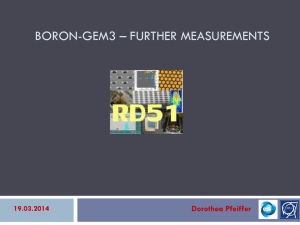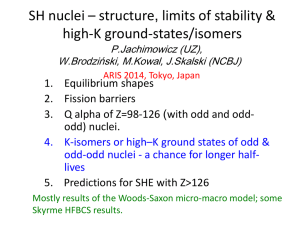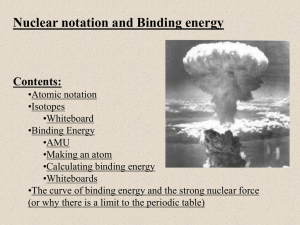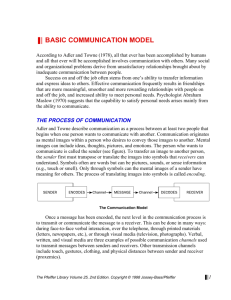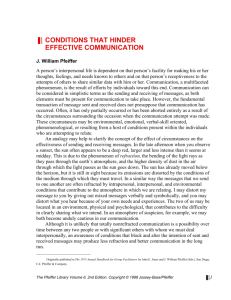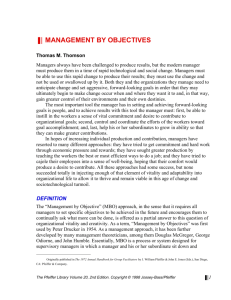2014027_Pfeiffer_FirstNeutrons
advertisement
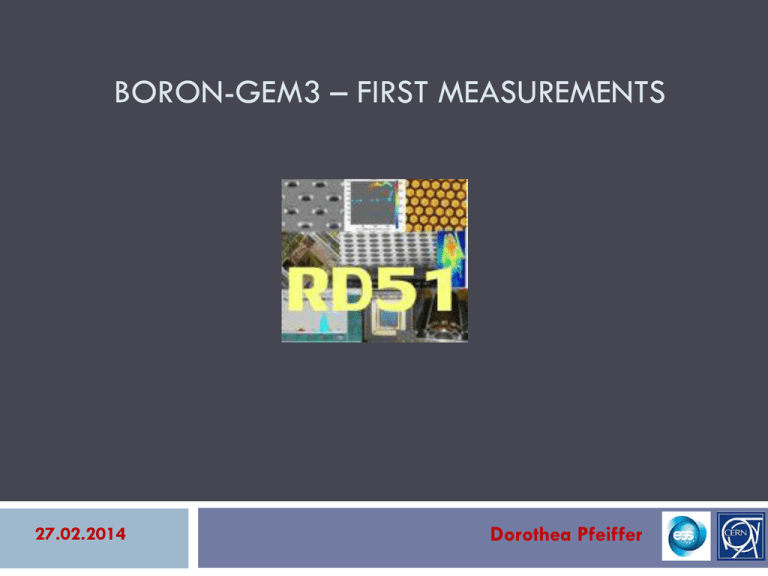
BORON-GEM3 – FIRST MEASUREMENTS 27.02.2014 Dorothea Pfeiffer Content 2 Neutron sources and Geant4 simulations Neutron conversion and Boron-GEM3 Differences to standard GEM3 with respect to energy calibration First measurements Dorothea Pfeiffer 27.02.2014 241 Am Be 370 MBq neutron source 3 370 MBq = 0.01 Curie [Ci] 241 Am Be sources emit 2.28E+06 neutrons per second per Ci Remainder of activity is due to gamma emission Our source emits hence ca. 22800 neutrons per second Source is shielded by 5 cm – 10 cm of PE Dorothea Pfeiffer 5 cm 10 cm 10 cm Geant4 simulation of source 4 Physics list QGSP_BERT_HP QGSP: quark gluon string model for high energy interactions of protons, neutrons, pions, and Kaons and nuclei BERT: Bertini cascade for primary protons, neutrons, pions and Kaons below ~10GeV HP: data driven high precision neutron package (NeutronHP) to transport neutrons below 20 MeV down to thermal energies 106 primaries (neutrons) simulated Assumption: Source is a cylindrical volume source that emits isotropic radiation PE thermalizes the higher energetic neutrons by elastic scattering Dorothea Pfeiffer 27.02.2014 Neutron source emission 5 Dorothea Pfeiffer 27.02.2014 Thermal neutron flux at detector 6 Flux of neutrons with E <= 25 meV: 85 Hz Flux of neutrons with E <= 50 meV: 200 Hz 25 meV Dorothea Pfeiffer 27.02.2014 Neutron capture crosssections at 1.82 Å (25meV) 7 Isot ope Crosss Reaction ection [barns] 3He 5333 n + 3He -> 3H (191 keV) + 1H (573 keV) Q= 0.76MeV Rp = 5.7 bar cm 6Li 940 n + 6Li -> a (2.06 MeV) + 3H (2.73 MeV) Q = 4.79 MeV Rt=130 mm 10B 3835 n + 10B -> 7Li*(0.84 MeV) + a (1.47 MeV) + g (0.48 MeV) (93%) Q=2.3 MeV -> 7Li (1.16 MeV) + a (1.78 MeV) (7%) Q=2.79 MeV Ra = 3.14 mm 157 25900 0 n + 157Gd -> 158Gd + g (79, 181, 944 keV) + conversion electron spectrum (29-182 keV) Q=7.94 MeV lce = 11.6 mm Gd Range Conversion efficiency of 1um of 10B4C: about 2% at En = 25 meV => using the simulated rates of 85-200Hz thermal neutrons, the rate of charged particles from neutron conversion should be between 1.7 Hz and 4 Hz Dorothea Pfeiffer 27.02.2014 Standard Triple GEM 8 Drift cathode: 50 um of Kapton with 5 um Cu on bottom 3 mm 2 mm 2 mm 2 mm Dorothea Pfeiffer 27.02.2014 Triple GEM with Boron-10 converter (variant 1) 9 Drift cathode: 300 um Al coated with 1 um10B4C on both sides 3 mm 2 mm 2 mm 2 mm Dorothea Pfeiffer 27.02.2014 Triple GEM with Boron-10 converter (variant 2) 10 Drift cathode: 18 um Al foil coated with 1.3 um10B4C one side 3 mm 2 mm 2 mm 2 mm Dorothea Pfeiffer 21.02.2014 Boron GEM3: detector and support 11 Readout x direction Readout y direction Readout for integrated signal induced at bottom of third GEM Gas flow (in) Drift with10B4C Support with O-ring Voltage divider for HV for drift and 3 GEM foils Gas flow (out) Dorothea Pfeiffer 27.02.2014 GEM3: spectrum 55 Fe (calibration spectrum) 12 But with Boron-GEM3, one sees … NOTHING! Why? Dorothea Pfeiffer 27.02.2014 Mean free path of photons in matter 13 Beer-Lambert law of light attenuation I = I0 e (-mx) I0: Intensity before passage through matter I: Intensity after passage through matter m: linear attenuation coefficient [cm-1] x: thickness of matter [cm] r: density of matter [g cm-3] m/r: mass attenuation coefficient [cm2 g-1] (taken from NIST XCOM database) 1/m: mean free path [cm] (matter with thickness of mean free path attenuates 1/e = 37% of the photons) Concept of mean free path for gas molecules is different (average distance travelled between collision with other moving particle) Mean free path = kB T/(20.5 p d2 p) [m] kB: Boltzmann constant [J/K] T: Temperature [K] P: pressure [Pa] D: diameter of gas particle [m] Dorothea Pfeiffer 27.02.2014 Standard Triple GEM – mean free path 14 Source 55 Fe Au X-ray 109 Cd, Ag X-ray 241 Am 22 Na Energy [keV] 6 10 20 60 500 mean free path [mm] 0.51 2.35 13.5 37.7 76.6 Transmission through 50 um [%] 90.7 97.9 99.6 99.9 99.9 mean free path [mm] 0.0097 0.0052 0.0332 0.704 13.4 Transmission through 5 um [%] 59.7 38.2 86 99.3 100 Kapton + Cu Transmission [%] 54.2 37.3 85.7 99.2 99.9 ArCO2 mean free path [mm] 27.6 114 831 13600 57800 Interaction in 3 mm [%] 10.3 2.6 0.36 0.02 0.005 5.58 0.97 0.31 0.02 0.005 Kapton Cu Kapton + Cu Interaction of unattenuated + ArCO2 source photons [%] For standard GEM3, 55 Fe useful for calibration ! Dorothea Pfeiffer 27.02.2014 Boron GEM3 – mean free path 15 Source 55 Fe Au X-ray 109 Cd, Ag X-ray 241 Am 22 Na Energy [keV] 6 10 20 60 500 Al mean free path [mm] 0.51 2.35 13.5 37.7 76.6 Variant 1: Transmission through 300 um [%] 0.01 11.97 75.67 97.77 99.32 Variant 2: Transmission through 18 um [%] 57.1 88.0 98.3 99.9 100 10B4C mean free path [mm] 0.0097 0.0052 0.0332 0.704 13.4 Transmission through 2 um [%] 99.66 99.92 99.98 99.99 100 Variant 1 transmission [%] 0.01 11.96 75.66 97.77 99.31 Variant 2 transmission [%] 57 88 98.33 99.86 99.96 mean free path [mm] 27.6 114 831 13600 57800 Interaction in 3 mm [%] 10.3 2.6 0.36 0.02 0.005 Variant 1: Interaction of unattenuated source photons [%] 0.001 0.31 0.27 0.02 0.005 Variant 2: Interaction of unattenuated source photons [%] 5.7 2.29 0.35 0.02 0.0 Al + 10B4C ArCO2 Al + 10B4C + ArCO2 For Boron-GEM3 with 300 um cathode, calibration should be done with Au or Ag X-ray! Measurement setup 16 Dorothea Pfeiffer 27.02.2014 Measurement with gain ~2000 17 GEM3 Boron-GEM3 HV U=4200 V, Im = 730 uA HV U=4180 V, Im = 730 uA With a 10 mm lead shield most of the gammas disappear Boron-10 GEM shows a signal with very high amplitude on the oscilloscope that saturates the preamp and the MCA After attenuation of 12 dB at entrance of pre-amplifier signal could be read by the MCA Assumption: signal in peak is discharges (to be confirmed) Dorothea Pfeiffer 27.02.2014 Spectrum 241AmBe source: 1 cm lead, gain 2000 18 Rate in peak: ~ 6 Hz Spectra of 241Am and 109 Cd: gain ~200 19 Peak position: 55 ?? Energy 60 keV Peak position: 65 Energy 23 keV No real peak – crappy energy calibration! Spectrum 241Am Be source: 1 cm lead, gain ~200 20 Peak position: 2650 Rate in peak: 3.9 Hz Peak position: 5200 Rate in peak: 4.1 Hz Measurement with gain ~200 21 HV: U=3720 V, Im = 646 uA Visible energies due to converted neutrons should be 0.84 MeV (7Li ion) and 1.48 MeV (alpha particle) Energy calibration gives peak energy of 2.8 MeV at preamplifier gain 5 using 60 keV gammas of 241 Am. Factor 2 off, BAD! Energy calibration gives peak energy of 1.8 MeV at preamplifier gain 10 using 23 keV gammas of 109 Cd. BETTER! Energy calibration is difficult with 241 Am and 109 Cd source Rate agrees with simulated flux of thermal neutrons Dorothea Pfeiffer 27.02.2014 Spectrum from reading wire in Boron Blade Detector at ILL (4 mm of gas) 22 Looks similar to our spectrum, also only one peak due to gas gap of 4 mm (not two peaks for alpha and Li ion) Dorothea Pfeiffer 27.02.2014 Next steps 23 Improve energy calibration Optimize detector gain Test Boron-GEM variant 2 (18 um Al foil) Increase gap between cathode and first GEM to 7mm Dorothea Pfeiffer 27.02.2014

